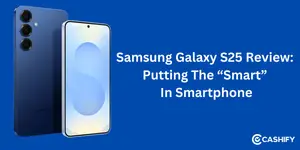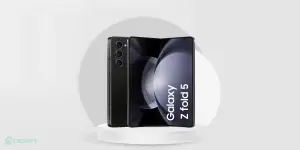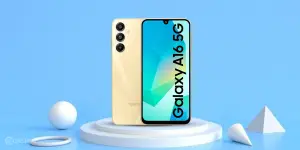At some point of exploring new smartphones, you must have wondered about AMOLED vs OLED display screens that these mobile brands tend to focus on. Having a sharper display with a good balance of vibrancy and colours is a desired feature now. So, comparing the two screen types only makes sense so that you can understand whether it’s worth a shot or not.
Today, we have comprehensively studied the significant display technologies available nowadays. We are talking about the AMOLED and OLED display technologies, their properties and their differences.
Also read: Best Smartphones with 120Hz refresh rate display
What are OLED displays?
It stands for Natural Light-Emitting Diode, a type of LED technique that utilises LEDs wherein the light is of organic molecules that cause the LEDs to shine brighter. These organic LEDs are used to make what are considered the best display panels in the world.
When you make an OLED display, you put organic films among two conductors to make them. As a result, a bright light comes out when electricity is used—a simple design with many advantages over other ways to show things.
OLEDs can be used to make emissive displays, which implies that each pixel can be controlled and emits its very own light. As a result, OLED displays have excellent picture quality. They have bright colours, fast motion, and, most importantly, very high contrast. Most of all, “real” blacks are the most important. The simple design of OLEDs also makes it easy to create flexible displays that can bend and move.
1. PMOLED (Passive Matrix OLED)
PMOLED stands for Passive Matrix Organic Light Emitting Diode. These devices are easy to find and much cheaper than other LEDs, but they cannot last long as their lifespan is very short. Therefore, this type of display is generally for small devices up to 3 inches.
2. AMOLED
AMOLED stands for Active Matrix Organic Light Emitting Diode. This type of display is generally for large platforms. It contains TFT, which further consists of a storage capacitor. It also works on the same principle as OLED displays.
Advantages of OLED displays
There are various advantages of OLED. Some of them are as follows:
- It provides a good-quality display.
- It is cost-effective.
- It is much brighter than LEDs.
- They do not require backlighting.
- It has a much faster response time as compared to traditional LCDs.
Disadvantages of OLED displays
There are very few limitations to OLED. Some of them are as follows:
- OLEDs’ lifespan is much shorter than LCD, LED and PDP display technologies.
- The OLEDs have variations in colour balance.
- It does not provide resistance against water. Water can easily damage the OLED displays.
What are AMOLED displays?
AMOLED offers no restriction on the size of the display. Its power consumption is much less than that of other display technologies. AMOLED provides incredible performance. It is thinner, lighter, and more flexible than any other display technology, such as LED or LCD.
Also Read: Here’s How to Use Bitmoji in All OnePlus Phones
The AMOLED display is widely used in mobiles, laptops, and televisions because it performs well. Therefore, SAMSUNG has introduced AMOLED displays in almost every product. For example, Full HD Super AMOLED in Samsung Galaxy S4 and Samsung Galaxy Note 3, Super AMOLED in Samsung Galaxy S3, HD Super AMOLED in Samsung Galaxy Note, and HD Super AMOLED Plus in Samsung Galaxy S3. Apart from this, it is also used in creating the following:
- Smartwatches
- Tablets
- Portable music players
- Games consoles
- Music production hardware
- Digital cameras
Advantages of AMOLED
There are various advantages of AMOLED. Some of them are as follows:
- It can be easily embedded into a display of any size.
- It has a much faster refresh rate as compared to PMOLED.
- They are also used in industrial applications.
- They offer much better viewing angles as compared to the IPS LCD.
Disadvantages of AMOLED in AMOLED vs OLED
There are very few limitations to AMOLED. Some of them are as follows:
- The quality of the display degraded with time. This is one of the biggest disadvantages of the AMOLED display.
- The AMOLED display is very likely to screen burn-in.
- AMOLED displays are very costly compared to other display technologies.
Also read: Replace your iPhone X screen at the best price
So far, we have discussed OLED and AMOLED display technologies. Now, we will look at some of the differences between OLED and AMOLED display technology:
Differences between AMOLED vs OLED Display Technology
Here’s a table to quickly glance over the differences in AMOLED vs OLED:
| Aspect | OLED | AMOLED |
|---|---|---|
| Technology | Comprises thin layers of organic components that emit light when current passes through them. Each pixel transmits its own light. | Consists of OLED pixels with an additional layer of thin-film transistors (TFTs) and storage capacitors to maintain pixel states. |
| Evolution | First developed technology. | Advanced version of OLED with active matrix technology, allowing for curved displays. |
| Display Quality | Displays deeper blacks. | Offers better display quality due to additional TFT layer and backplane technologies. |
| Sunlight Visibility | Limited visibility under direct sunlight. | Poor visibility under direct sunlight. |
| Flexibility | Less flexible. | More flexible, enabling curved and foldable displays. |
| Cost | Generally cheaper. | More costly due to the advanced technology and additional layers. |
| Protection Layers | Organic compounds are present between protective layers of glass or plastic. | Similar protective layers with additional TFT layer for better performance. |
1. Technology – AMOLED vs OLED
OLED comprises thin layers of the organic component, which emits light when the current passes through it. In this technology, each pixel transmits its own light. Conversely, AMOLED consists of an additional layer of thin-film transistors (TFTs). In AMOLED, the storage capacitors are used to maintain the pixel states.
With varying technologies, first came the OLED. While the technology differs among various manufacturers, Samsung’s edge AMOLED displays use plastic substrates with poly-Si TFT technology similar to how LG uses it in their POLED technology. This technology is what makes it possible to build curved displays using an active-matrix OLED panel.
Also read: Different types of smartphone displays explained
2. Display – AMOLED vs OLED
OLED displays much deeper blacks than AMOLED displays. You cannot see the screen in an AMOLED display under direct sunlight. However, the AMOLED display quality is much better than that of OLEDs as it contains an additional layer of TFTs and follows backplane technologies.
AMOLED displays are much more flexible as compared to OLED displays. Hence, they are much more costly than OLED displays.
3. Working – AMOLED vs OLED
OLED devices are simple solid-state devices consisting of a thin layer of organic compounds in an emissive electroluminescent layer where electricity is generated.
These organic compounds are present between the protective layers of glass or plastic. Comparatively, AMOLED comprises an active matrix of OLED pixels along with an additional layer of TFTs. This extra layer is responsible for controlling the current flow in each pixel.
Also Read: How To Use Android Auto: A Step By Step Guide!
4. Contrast Ratio – AMOLED vs OLED
The OLED display offers a high level of control over pixels. Hence, it can be turned off completely, resulting in an excellent contrast ratio compared to the AMOLED displays and less power consumption. On the other hand, AMOLEDs have faster refresh rates than OLEDs. Also, they offer a tremendous artificial contrast ratio as each pixel transmits light but consumes more power than OLEDs.
5. Display size – AMOLED vs OLED
OLED displays are comparatively much thinner compared to LCDs. Hence, it provides more efficient and bright presentations. In addition, OLED offers support for large display sizes compared to traditional LCDs. AMOLEDs remove the limitation of display sizes. One can fit it into any display size.
Considering all the points mentioned above, the key difference to understand appropriately is that POLED is an OLED display with a plastic substrate. On the other hand, AMOLED is Samsung’s word for its display technology, mainly for marketing. Therefore, most phone manufacturers with AMOLED displays are using Samsung displays. It is as simple as that. Additionally, all the curved display technology is made possible because of the usage of the plastic substrate.
Also read: Tempered Glass vs Plastic Screen protectors
So, based on the points mentioned above and the difference between OLED and AMOLED displays, you can choose any of the two display technologies at your convenience. Both are good, offer excellent performance, and can be customized according to your requirements.
AMOLED displays are of higher quality than OLEDs since they have an additional layer of TTs and use backplane technologies. Compared to OLED screens, AMOLED displays are far more flexible. As a result, they are substantially more expensive.
Top 3 AMOLED Screen Phones in India (2025)
Window to the digital world, the display is one of the first seen features when selecting a smartphone, so a show must be good, and an AMOLED display offers the same. Offering a great viewing experience, here are the top 3 AMOLED screen smartphones available in the market right now:
1. Realme 10 Pro Plus 5G in AMOLED vs OLED
Realme 10 Pro Plus 5G features a 6.7-inch AMOLED display with 394 PPI display. It runs on MediaTek Dimensity 1080. On the rear, the Realme 10 Pro Plus 5G has a triple-camera setup with a 108-megapixel primary sensor, an 8-megapixel ultra-wide angle sensor, and a 2-megapixel sensor.
Coming to the front, it has a 16-megapixel selfie camera housed in the punch-hole display. It comes with a 5000mAh battery that supports 67W smart flash charging. The Realme 10 Pro Plus 5G is among the best segments with an AMOLED FHD display.
Also Read: Realme 10 Pro Plus Review – Game Changer Or Not?
2. Xiaomi Redmi Note 12 Pro 5G in AMOLED vs OLED
The Xiaomi Redmi Note 12 Pro 5G runs on a MediaTek Dimensity 1080 chipset bundled with a Mali-G68 MC4 graphics processor and up to 12GB RAM. The display front features a 6.67-inch AMOLED display with FHD and 395 PPI.
The camera has a triple rear camera setup with a 50-megapixel primary sensor, an 8-megapixel ultra-wide angle sensor, and a 2-megapixel macro sensor. In addition, it has a 16-megapixel selfie camera. The battery is 5,000 mAh and has 67W fast charging. The AMOLED display on the Redmi Note 12 Pro 5G is a treat for all media enthusiasts.
Also Read: Xiaomi Mi 11 Lite Review – Lifestyle Phone Of The Year
3. OPPO Reno8 5G in AMOLED vs OLED
OPPO recently launched the OPPO Reno8 5G, which has a MediaTek Dimensity 1300 chipset coupled with an Arm Mali-G77 MC9 GPU and up to 8GB of RAM. It also features a 6.43-inch curved AMOLED display with support for HDR10+.
On the rear, it comes with a triple-camera setup with a 50-megapixel primary sensor, an 8-megapixel ultra-wide angle sensor, and a 2-megapixel macro camera. In addition, it has a 32-megapixel selfie camera integrated inside the punch-hole on display on the front. It comes with a 4,500mAh battery that supports 80W fast charging and can charge the phone 100 per cent in just 15 minutes. Since it comes with a Full HD+ AMOLED display on the display front, it is a treat for gamers and media consumption lovers.
Top 3 OLED Screen Phones in India (2025)
1.Apple iPhone 16 Pro Max
The iphone 16 pro max screen is 6.9-inch LTPO Super Retina XDR OLED, 120Hz, 1320×2868 resolution, 2,000 nits brightness. Apple’s latest big hitter (launched September 2024) comes with a stunning OLED display that’s super sharp and bright. It runs on the powerful A18 Pro chip, perfect for everything from gaming to editing videos.
On the back, it has a triple setup with a 48-megapixel main sensor, a 12-megapixel ultra-wide sensor, and a 12-megapixel telephoto lens. Up front, there’s a 12-megapixel selfie camera in the Dynamic Island notch. It’s got a 4,441mAh battery with fast charging (50% in 30 minutes) and wireless charging support.
The OLED screen makes movies and photos pop with true-to-life colors and perfect blacks—great for media lovers and anyone who wants a premium display experience.
2. Realme 14 Pro Plus
The phone comes with a 6.83-inch OLED, 120Hz, Full HD+ (sharp and smooth). Launched in early 2025, this phone rocks a big, bright OLED screen that’s perfect for watching videos or scrolling. It’s powered by a Snapdragon 7s Gen 3 chip with 8GB RAM, so it’s fast for gaming and apps. Plus, it’s got a massive 6000mAh battery with super-fast charging!
It comes with a triple setup on the back with 50MP main + 8MP + 50MP lenses, and a 32MP front camera for selfies. The phone offers 6000mAh with Super VOOC fast charging via USB-C. The screen’s deep blacks and vivid colors make everything look amazing—great for media fans and multitaskers. Known as “the most popular phone around Rs. 28,000”!
3. Motorola Edge 50 Fusion
This phones comes with 6.67-inch P-OLED, 144Hz, Full HD+ (super smooth and colorful). Released in 2024 but still a top pick in 2025, this phone has a fast 144Hz P-OLED screen that’s awesome for gaming and scrolling. It runs on a Snapdragon 7s Gen 2 chip with 8GB RAM, keeping things quick and snappy.
The phone comes with a dual rear setup with a 50MP main + 13MP ultra-wide lens, plus a 32MP selfie camera. It comes with 5000mAh with Turbo Power charging via USB-C. The P-OLED screen’s high refresh rate and rich colors make it a treat for your eyes—perfect for budget buyers who want quality. Called “the most popular phone around Rs. 20,000”!
Why Apple Prefers OLED?
Apple uses OLED screens in its iPhones (like the Apple iPhone 16 series) and calls them “Super Retina XDR” displays. Here’s why they stick with OLED:
- They Don’t Make Their Own Screens
- Apple doesn’t build screens itself—it buys them from companies like Samsung Display or LG Display. These suppliers provide OLED panels, and Apple customizes them with its own tech (like software tweaks for color and brightness). Samsung Display, a big supplier for Apple, makes OLED panels for iPhones, but they’re not labeled AMOLED because Apple doesn’t use that term—it’s Samsung’s branding.
- Simple version: Apple gets high-quality OLED from others and makes it “Apple-style” instead of designing its own AMOLED tech.
- Focus on Perfect Colors and Balance
- Apple cares a lot about making colors look real and natural, not just super bright or crazy vivid. OLED gives them the flexibility to tune the screen exactly how they want with software (like True Tone or ProMotion). They don’t need AMOLED’s extra brightness or contrast tricks because their goal is a balanced, eye-friendly display.
- Example: On an iPhone, a sunset photo looks true-to-life, not overly punchy, which matches Apple’s design vibe.
- Battery Life Control
- OLED already saves power by turning off pixels for black areas (like in dark mode). Apple pairs this with its super-efficient chips (like the A18 Bionic) and iOS software to stretch battery life. They don’t need AMOLED’s extra power-saving features because their whole system is built to sip power anyway.
- Simple version: Apple’s OLED plus their tech is enough—they don’t need AMOLED’s boost.
- Branding and Simplicity
- Apple avoids techy terms like “AMOLED” in marketing. They go for fancy names like “Super Retina XDR” to sound unique and premium. Calling it OLED keeps things simple while letting them flex their custom tweaks.
- Why? It’s about looking sleek and different, not using Samsung’s label.
Why Samsung Prefers AMOLED?
Samsung uses AMOLED in its phones (like the Samsung Galaxy S25 Ultra) and has been pushing it for years. Here’s why they love it:
- They Invented and Make AMOLED
- Samsung Display (a part of Samsung) pioneered AMOLED tech and makes most of the world’s AMOLED screens—including some for Apple! Since they control the tech, they use it in their own Galaxy phones to show off what they can do.
- Simple version: Samsung owns AMOLED, so they use it to flex their skills and keep it in-house.
- Brighter, Bolder Displays
- Samsung loves screens that grab your attention with crazy bright colors and high contrast. AMOLED’s active matrix setup lets them push brightness (like 2,600 nits on the S25 Ultra) and make blacks super deep. It’s perfect for sunny days or watching HDR videos.
- Example: On a Galaxy phone, a game or movie looks extra vivid—sometimes even brighter than real life—which is Samsung’s style.
- Power Efficiency for Their Designs
- AMOLED’s precise pixel control saves battery better than basic OLED, especially with Samsung’s big, high-resolution screens. They pair it with features like “Always-On Display” (showing the clock or notifications without lighting the whole screen), which works great because AMOLED can turn off unused pixels.
- Why? Samsung packs big screens and features into their phones, so AMOLED helps keep battery life solid.
- Marketing Edge
- Samsung uses “AMOLED” (or “Dynamic AMOLED”) as a buzzword to say, “Our screens are the best!” It’s a way to stand out from other brands and highlight their tech leadership. They’ve been doing this since the Samsung Galaxy S1 in 2010!
Use Cases: When to Choose AMOLED or OLED
AMOLED and OLED are two types of screens you see in devices like phones, TVs, and smartwatches. They’re similar but have some differences that make them better for certain things. Let’s break it down in simple English and explain when you’d pick one over the other, plus what’s coming next for these technologies.
Smartphones and Tablets
Best Choice: AMOLED
- Why? Phones and tablets need awesome screens that look bright and colorful, plus they need to save battery since you use them all day. AMOLED is great for this.
- What’s AMOLED? It stands for “Active Matrix Organic Light-Emitting Diode.” It’s a type of OLED that lights up each tiny dot (pixel) on the screen on its own. This means it can turn off parts of the screen to show pure black and save power.
- Why it’s better here: AMOLED screens look amazing with deep blacks and bright colors. They’re perfect for fancy phones (like flagship models) where people don’t mind spending extra for the best quality. For example, watching videos or scrolling Instagram looks sharper and more vivid. Plus, turning off pixels saves battery when you’re using dark mode or watching something with lots of black.
- Compared to OLED: Regular OLED is good too, but AMOLED has better control over each pixel, so it’s more efficient and looks a bit nicer on small screens like phones.
Televisions
Best Choice: OLED (but AMOLED for some cases)
- Why OLED for TVs? OLED TVs are awesome for watching movies or shows at home. They give you super clear pictures with perfect blacks (because each pixel can turn off) and great colors. This makes them a top pick for a home theater setup where you want everything to look stunning.
- What’s OLED? It’s “Organic Light-Emitting Diode,” a tech where tiny lights make the picture. Unlike old TVs with a backlight, OLED doesn’t need one—each pixel glows by itself.
- When AMOLED wins: If you’re a gamer or watch stuff with lots of still images (like news channels with logos), AMOLED might be better. It can handle faster screen refreshes (how quick the picture updates), which is great for gaming. Also, AMOLED is less likely to get “burn-in”—that’s when a ghost image sticks on the screen from showing the same thing too long (like a game’s health bar).
- Details: Most TVs today use OLED, not AMOLED, because OLED is cheaper to make big. But if AMOLED TVs grow in popularity, they could take over for gamers or people worried about burn-in.
Wearables (like Smartwatches)
Best Choice: AMOLED
- Why? Smartwatches are tiny, and their screens need to save power while still being easy to see—whether you’re in the sun or a dark room. AMOLED is perfect for this.
- How it helps: On a smartwatch, AMOLED can turn off most of the screen (like the black background) and just light up the time or your steps. This saves battery big time. Plus, the colors pop, and it’s clear even in bright light.
- Example: Think of a watch face with a black background and white numbers—AMOLED makes the black truly dark (not gray) and uses less power than OLED would.
- Compared to OLED: Regular OLED works fine, but AMOLED’s extra control makes it more efficient for small devices you wear all day.
Future Trends: What’s Coming for AMOLED and OLED?
Screens are getting even better! Read below what’s next for OLED and AMOLED :
Advancements in OLED
- MicroLED
- What is it? A new tech that mixes the best of OLED (like perfect blacks and no backlight) with brighter screens and longer life.
- How it’s different: OLED uses organic stuff that can wear out over years. MicroLED uses tiny inorganic LEDs (like super small light bulbs) that don’t fade as fast and can get way brighter.
- Why it matters: Imagine a TV that’s as good as OLED but lasts longer and shines brighter for sunny rooms. It’s not common yet because it’s hard and expensive to make, but it’s the future!
- Example: You could watch a super bright movie on a MicroLED TV without losing color quality, and it wouldn’t wear out after a few years.
- Flexible Displays
- What is it? OLED screens that bend or fold without breaking.
- What’s happening: Companies are making phones that fold in half or even roll up like paper using flexible OLED.
- Details: The organic material in OLED can be put on bendy plastic instead of stiff glass. This means your next phone could fold into your pocket or stretch out into a tablet.
- Example: Think of a phone that’s small when you carry it but opens into a big screen for games or movies—flexible OLED makes that real!
Advancements in AMOLED
- Higher Resolutions
- What is it? AMOLED screens with even more tiny dots (pixels) packed in, so everything looks sharper.
- Why it’s cool: More pixels mean you can’t see the dots, even up close. It’s like going from a blurry picture to a super clear one.
- Details: Right now, AMOLED already looks great, but future versions might go beyond 4K or 8K, making VR headsets or tiny watch screens look unreal. Imagine zooming into a photo and still seeing every detail perfectly!
- Example: A future AMOLED phone could show a video so clear you’d feel like you’re there.
- Integrated Sensors
- What is it? Adding stuff like fingerprint scanners or cameras right into the AMOLED screen.
- How it works: Instead of having a separate spot for a fingerprint reader or camera (like under the screen or in a notch), the screen itself could do it. AMOLED’s tech lets sensors hide in the pixels.
- Why it matters: This means phones or watches with no edges (bezels) or holes—just a smooth screen that does everything.
- Example: You could tap anywhere on your phone’s AMOLED screen to unlock it, or take a selfie without a camera bump sticking out.
Big Picture: AMOLED vs. OLED
- AMOLED is like a super version of OLED. It’s better for small, battery-powered stuff (phones, watches) and might take over for gamers or fancy TVs later.
- OLED is awesome for big screens like TVs and is cheaper right now, but it’s less flexible for power-saving tricks.
- Future? Both are getting cooler—MicroLED might replace them someday, and flexible screens or sensor-packed AMOLED could change how we use gadgets!
Also Read: OPPO Reno8 Review – Stylish Looks With Capable Camera
Conclusion: AMOLED vs OLED
Smartphone displays have advanced significantly in recent years, more so than most people realise in this technological age. Display screens are similar to windows in the mobile world, which has seen a tremendous transformation in innovative products in the last several years. People have gotten more selective when buying a phone in recent years, and although all of the functions are important, the display is always the most noticeable.
Major smartphone manufacturers attempt to provide their consumers with the most delicate devices possible that incorporate the most up-to-date technologies. In AMOLED vs OLED, AMOLED is a type of OLED and a more prominent example of both OLED and POLED, so there’s no debate about which is superior.
FAQs
Is OLED better than AMOLED?
In terms of phone displays, AMOLED is considered an upgrade over traditional OLED. AMOLED integrates active transistors for individual pixel control, resulting in enhanced picture quality and more vibrant colours compared to standard OLED displays.
Which is better, OLED or AMOLED or QLED?
While QLED displays are cost-effective, OLED, WD-OLED, and AMOLED offer superior picture quality, better colour accuracy, and deeper blacks. QLEDs are commonly found in budget-friendly TVs but may lack the consistent picture quality of OLED and AMOLED displays.
Does Samsung use OLED or AMOLED?
Samsung smartphones feature various types of AMOLED displays, including Super AMOLED and Dynamic AMOLED. These displays are known for their vivid colours and deep blacks, providing users with an immersive viewing experience.
Does Apple use OLED or AMOLED?
Apple has embraced OLED technology in its iPhones since the release of the iPhone X. However, other Apple devices like the Apple Watch, iPads, and MacBooks have yet to incorporate OLED displays.
Which screen is better than OLED?
While OLED displays excel in contrast ratio and true blacks, LCD displays offer advantages in brightness and visibility in well-lit environments. OLED may be preferable for low-light viewing, while LCD might be better suited for bright conditions.
Which display is best for eyes?
LCD displays offer adjustable backlighting, allowing for reduced blue light emission, which can help alleviate eye strain. They are also more cost-effective and may be better suited for static content tasks, making them a good choice for those concerned about eye comfort during extended use.
If you’ve just bought a new phone and don’t know what to do with your old phone, then here’s your answer. Sell old mobile to Cashify and get the best price for it. If you are planning to buy a new phone, check out Cashify’s refurbished mobile phones. You can get your favourite phone at almost half price with six-month warranty, 15 days refund and free delivery.















